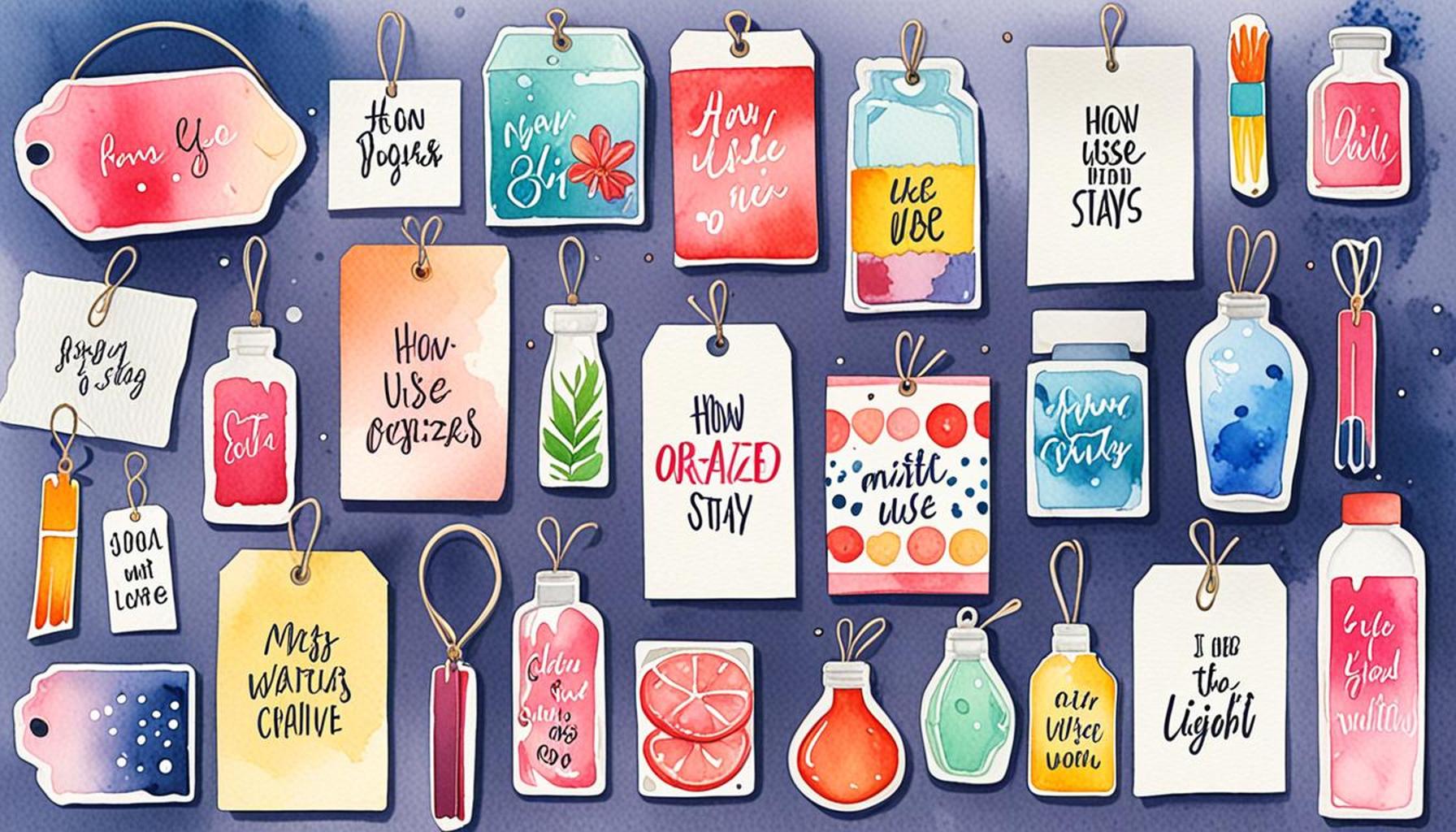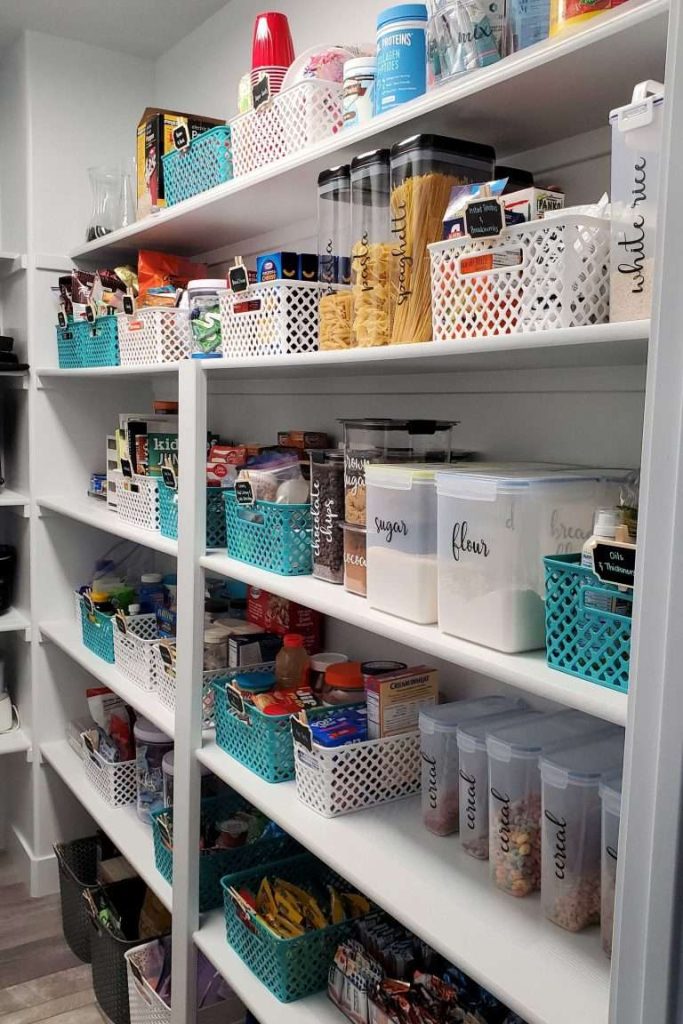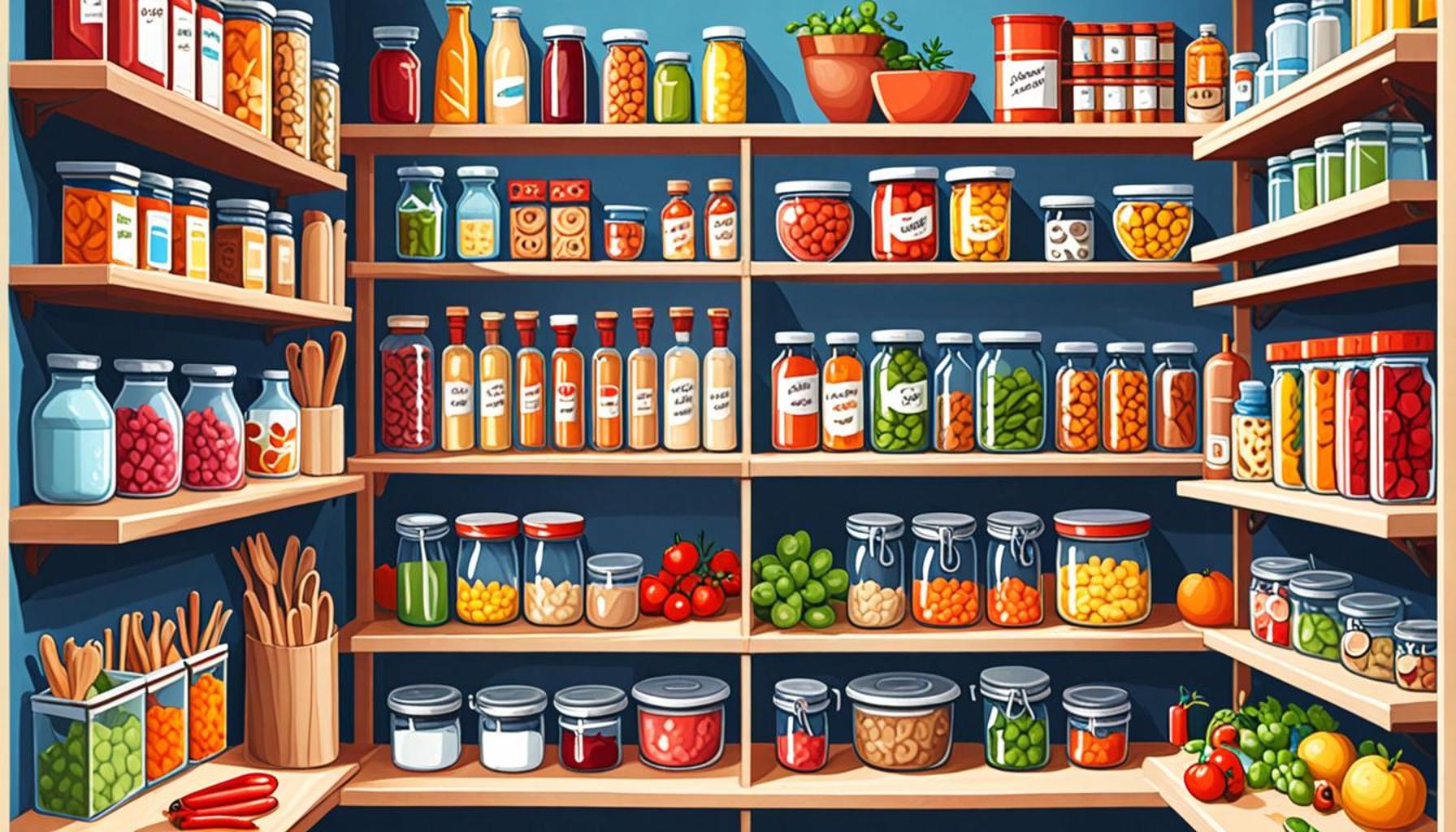Top Tips on How to Use Labels to Stay Organized and Efficient

The Importance of Organization
In our fast-paced world, staying organized is essential for productivity. Labels are a powerful tool that can transform your chaos into clarity. By categorizing and clarifying your possessions or tasks, you can enhance your efficiency significantly. This simple yet effective method allows you to take control of your environment, whether at home, in the office, or within your garage.
Consider the compelling benefits of using labels:
- Immediate Identification: Picture this: you’re in the middle of preparing dinner, and you suddenly realize you need a specific spice. Instead of frantically rifling through an unorganized cabinet, a quick glance at labeled containers allows you to find exactly what you need without delay. This immediate identification not only saves time but also reduces frustration.
- Reduced Stress: Studies have shown that clutter can contribute to mental stress. A well-organized space leads to a more peaceful mindset, making it easier for you to focus on what truly matters. Imagine your workspace, free from the overwhelming mess, where every item is in its designated spot. This clarity of thought can foster creativity and efficiency.
- Enhanced Workflow: When your tasks are structured and prioritized effectively using labels, you can navigate through your to-do lists with ease. For instance, dividing tasks into categories such as “urgent,” “important,” and “long-term” on labeled folders can help you focus on what needs to be tackled first, ensuring nothing slips through the cracks.
Labels aren’t just for file cabinets or storage boxes; they can be used in various contexts, enhancing organization in many areas of your life. Here are a few examples:
- Home Offices: In a home office, labeled binders for different projects can streamline your workflow. Use color-coded labels to differentiate between active projects, completed documents, and ideas for future reference.
- Kitchen: In the kitchen, labeling pantry items not only helps in meal preparation but also assists in managing your grocery shopping. For instance, labeling containers with “grains,” “snacks,” and “baking supplies” allows you to quickly assess what you have on hand.
- Garage: Keeping tools and equipment categorized for efficiency is vital in a garage. Labeling shelves, bins, and toolboxes with phrases like “power tools,” “gardening supplies,” or “sports equipment” ensures that everything is easy to find, reducing the time you spend searching for that elusive wrench or lawn bag.
In this article, we will delve into the top tips on how to leverage labels for optimal organization. You’ll discover innovative methods, essential tools, and practical examples that can revolutionize how you manage your space and time. Let’s embark on the journey to mastering the art of labeling, leading to a more efficient and organized life that ultimately allows you to thrive in today’s dynamic world.
SEE ALSO: Click here to read another article

Maximizing Your Organization Potential
To harness the true power of labels, it’s crucial to understand how to implement them effectively across various areas of your life. The right labeling strategy can streamline your routines, foster better efficiency, and ensure that every item or task is easy to access. Here are some top tips on how to use labels effectively:
1. Choose the Right Labeling System
Before you dive into labeling, it’s important to decide on a system that fits your needs. Consider factors like clarity and visibility. You might choose to use:
- Color Coding: Assign different colors to various categories. For example, blue for papers related to finances, green for household items, and yellow for personal projects can instantly provide a visual cue.
- Descriptive Labels: Use clear, descriptive phrases instead of vague terms. For instance, labeling containers with “Granola Bars” rather than just “Snacks” will make it easier for anyone to locate what they need quickly.
- Digital Labels: If you’re digitizing your life, take the same principles online. Incorporate tags in your email or digital file systems—such as ‘Urgent’, ‘To Review’, or ‘Personal’—to enhance your digital organization.
2. Declutter Before Labeling
It may seem quicker to slap labels on existing messes, but this can lead to ineffective organization. Take the time to declutter your space first:
- Assess What You Have: Go through your items and decide what to keep, donate, or discard. This not only simplifies your environment but also enables you to create categories that make sense.
- Consider Common Use: When organizing, think about how often you use specific items. Keep frequently used items within easy reach and designate space for less used possessions.
3. Labeling Beyond the Ordinary
Think outside the box when it comes to where and how you can use labels. They can enhance organization in unexpected areas:
- Mail Management: Use labels to categorize incoming and outgoing mail into “Urgent,” “To File,” and “Recycle.” This helps you stay on top of correspondence.
- Time Management: Use labeled time-blocking charts to structure your day. For instance, having specific blocks labeled “Work,” “Exercise,” and “Family Time” can ensure balanced and organized scheduling.
Implementing these tips can create a solid foundation for efficient labeling practices. Remember, the aim is to create a system that works for you, enabling easy access to both physical items and abstract tasks. By optimizing your approach to labeling, you not only enhance your organization but also pave the way for greater productivity in your daily life.
| Category | Key Features |
|---|---|
| Label Types | Utilize various label types, such as color-coded labels, to visually distinguish between different tasks and categories, thus enhancing your productivity. |
| Benefits of Organization | A well-organized space through labeling can significantly reduce time wasted in locating items. This, in turn, boosts efficiency in both personal and professional settings. |
| Digital vs. Physical Labels | Both digital label systems, like file naming conventions, and physical labels for tangible files can complement each other, enriching your organizational strategy. |
Implementing a robust labeling system can also streamline your workflow. When every item, file, or task has a corresponding label, you not only declutter your physical space but also bring clarity to your mental processes. Investigate how people in various professions—like organizing consultants or project managers—use labels strategically to enhance their efficiency. Consider exploring tools that allow for customizable labeling options, making it easier to adapt your organization style to your unique needs and preferences. Labels are not just about categorizing; they are an essential strategy in building a productive environment.
CHECK OUT: Click here to explore more
Unlocking the Power of Labels in Everyday Life
Utilizing labels effectively can dramatically enhance not just your physical spaces but also your mental clarity. By refining how you implement your labeling strategies, you’ll pave the way for both a well-organized environment and a more productive life. Below are additional top tips on how to leverage labels effectively:
4. Create a Consistent Labeling Habit
Establishing a routine around labeling will ensure that you remain organized over time. Keep the following practices in mind:
- Regular Updates: Make it a habit to update your labels as you acquire new items or transition projects. Daily check-ins on your labels will help you maintain clarity over what each label signifies.
- Label Inventory: Maintain an inventory of the items you’ve labeled. This can be a simple spreadsheet or list, allowing you to track where everything is stored. For example, noting that your “Winter Clothes” are in a storage bin labeled “Winter” can save you time when the season changes.
5. Interactive Labeling Techniques
Innovative labeling strategies can involve active engagement, which helps reinforce the organization:
- QR Codes: For tech-savvy individuals, consider using QR codes on your labels that link to a digital inventory or information about the items. This is particularly useful in spaces where items are frequently rotated, such as kitchens or stores.
- Reusable Labels: Invest in reusable labels that can be easily updated. Products like chalkboard labels or wipe-off stickers allow you to adapt your categories effortlessly while maintaining a sleek aesthetic.
6. Labeling for Emotional Impact
Labels are not solely functional; they can also play a role in fostering positive emotions and reducing stress:
- Inspirational Labels: Label your workspace or home office with motivational phrases such as “Focus” or “Creativity Zone.” This aids in mentally preparing you for tasks and keeps the ambiance uplifting.
- Color Psychology: Utilize color psychology when selecting label colors. Colors like blue have been associated with tranquility, while yellow can stimulate creativity. Choosing the right colors for your labels can enhance focus and mood in frequently accessed spaces.
7. Embrace Digital Solutions
In an increasingly digital landscape, don’t overlook the power of labels in the online realm. Effective digital labeling can drastically improve efficiency:
- Emails and Documents: Create a robust labeling system for your emails or digital files. Utilize folders labeled “Action Required,” “Read Later,” or “Archive” to streamline your workflow and make it easier to locate critical information.
- Task Management Apps: Leverage task management tools that allow you to label or tag tasks by project or urgency. By effectively labeling digital tasks, you can prioritize and track them effortlessly, reducing the feeling of being overwhelmed.
These strategies are designed to help you unlock the full potential of labeling in various aspects of life. Whether it’s enhancing productivity in your work environment or creating a more serene home space, the thoughtful application of labeling can lead to remarkable improvements in your overall efficiency and organization. Explore these facets of labeling, and discover how they can be tailored to suit your unique needs.
CHECK OUT: Click here to explore more
Conclusion: Mastering the Art of Labeling for Ultimate Organization
In a world bustling with responsibilities, utilizing labels effectively can transform chaos into harmony, greatly enhancing both organization and efficiency. From establishing a consistent labeling habit to employing innovative technologies like QR codes, the strategic application of labels serves to streamline both your physical environment and digital landscape. Your journey towards organization can also embrace the elements of color psychology and emotional reinforcement by incorporating motivational phrases into your labeling strategy, creating not only functional spaces but also inviting atmospheres conducive to productivity.
Moreover, as you navigate through various aspects of life, consider the power of labels as a tool for clarity. With the integration of a robust system for digital labeling in emails and task management apps, you can swiftly reclaim precious time that might otherwise be lost in the search for critical information. This duality of physical and digital organization underscores the necessity of adopting comprehensive labeling techniques tailored to your unique needs.
Ultimately, embracing these top tips on how to use labels will not only empower you in your everyday life but will also serve as a stepping stone towards achieving a sense of calm amidst the demands of modern living. As you venture forth, remember that effective labeling is a key component to unlocking enhanced productivity and a gratifyingly organized existence. So, start labeling today, and experience the transformational benefits firsthand.



